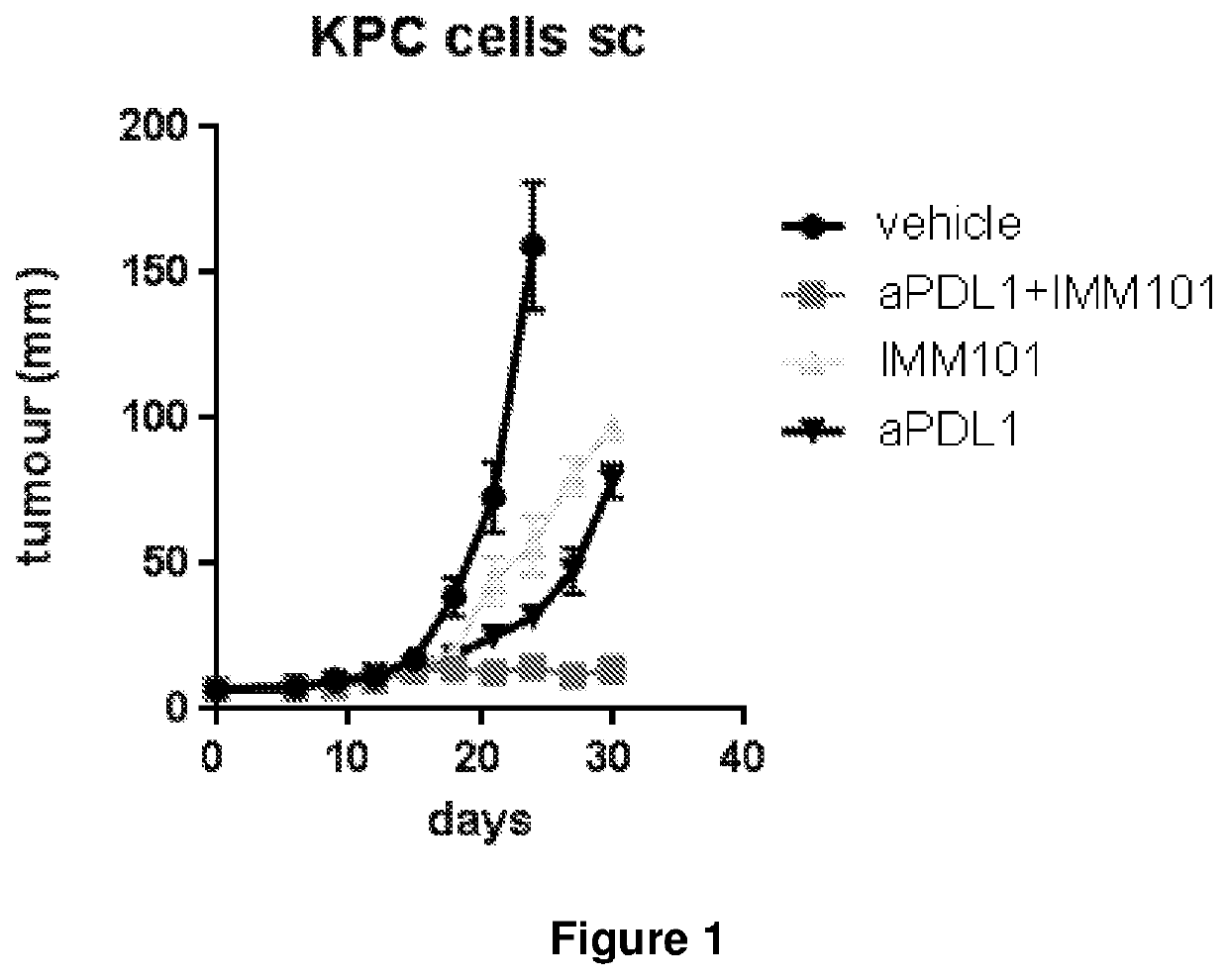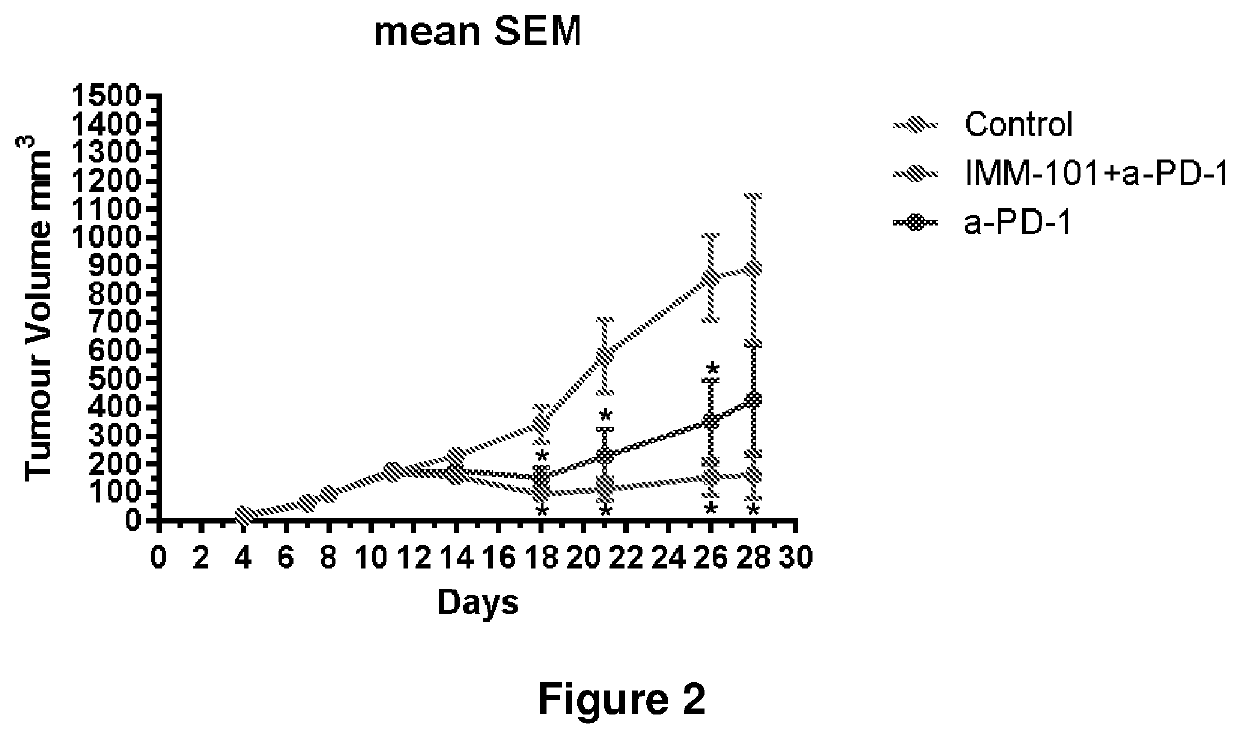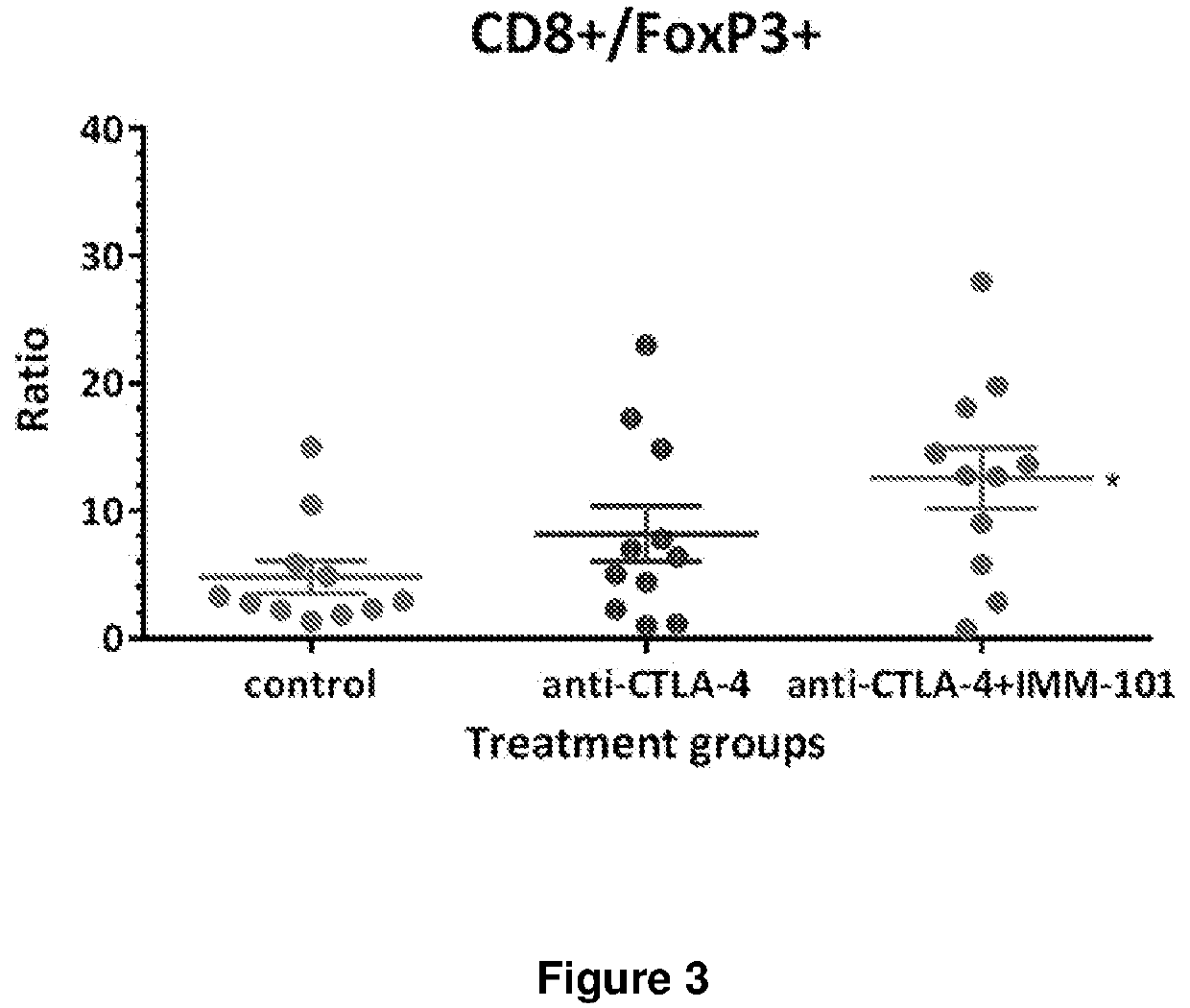Checkpoint inhibitor and a whole cell Mycobacterium for use in cancer therapy
a checkpoint inhibitor and whole cell technology, applied in the field of cancer therapy, can solve the problems of ineffective anti-tumour immunity, tumour promotion, and inability to break immunosuppression at the cancer site, and achieve the effect of restoring normal immune reactivity networks, and reducing the risk of cancer
- Summary
- Abstract
- Description
- Claims
- Application Information
AI Technical Summary
Benefits of technology
Problems solved by technology
Method used
Image
Examples
example 1
[0126]Adult C57BL / 6 mice were injected subcutaneously on the flank with 105 cells from a pancreatic cancer cell line obtained from KPC mice (Hingorani et al. Cancer Cell, 2005, 7:469-48). These murine pancreatic cancer cells bear mutations in Kras, p53 and Pdx-Cre (Hingorani et al. Cancer Cell, 2005, 7:469-48).
[0127]When the injected tumour cells had grown to become a palpable tumour (day 0), mice were left untreated or received treatment with:[0128]1) 0.1 mg M. obuense NTCT 13365 / mouse, subcutaneously alternating injections in the scruff of the neck with those at the base of the tail on alternating days over 5 day period with a 2 day break for the length of the study;[0129]2) 10 mg / kg anti-PDL-1 mAb or 10 mg / kg anti PD-1 mAb intraperitoneally once weekly;[0130]3) the combination of anti-PDL-1 or 10 mg / kg anti PD-1 mAb and M. obuense NTCT 13365 at a dose and schedule described above for the two compounds used singly.
[0131]Tumour growth was monitored over the course of the study to d...
example 2
[0133]The effects of combination treatment with IMM-101 and checkpoint inhibitors were investigated in C57BL / 6 mice bearing subcutaneous B16-F10 tumours.
[0134]The mice were engrafted at D0. Mice were randomized on D1 and received a total of 8 SC injections of IMM-101 at 0.1 mg / mouse on D1, D3, D5, D7, D9, D11, D13 and D15 (half of surviving mice) or D16 (half of surviving mice) (Q2D×8) or a total of 4 IP injections of anti-PD1 or anti-CTLA4 at 10 mg / kg (twice weekly for two consecutive weeks on D1, D5, D8 and D12: TW×2) alone or in combination. At Day 15 and 16, half of all surviving mice were terminated after the last treatment. The tumour immune infiltrate cells and spleen immune cells (the ratio of CD3+CD8+ cells and FoxP3 Treg cells) characterization were quantified by FACS analysis (FIG. 3).
PUM
| Property | Measurement | Unit |
|---|---|---|
| shrinkage | aaaaa | aaaaa |
| shrinkage | aaaaa | aaaaa |
| shrinkage | aaaaa | aaaaa |
Abstract
Description
Claims
Application Information
 Login to View More
Login to View More - R&D
- Intellectual Property
- Life Sciences
- Materials
- Tech Scout
- Unparalleled Data Quality
- Higher Quality Content
- 60% Fewer Hallucinations
Browse by: Latest US Patents, China's latest patents, Technical Efficacy Thesaurus, Application Domain, Technology Topic, Popular Technical Reports.
© 2025 PatSnap. All rights reserved.Legal|Privacy policy|Modern Slavery Act Transparency Statement|Sitemap|About US| Contact US: help@patsnap.com



